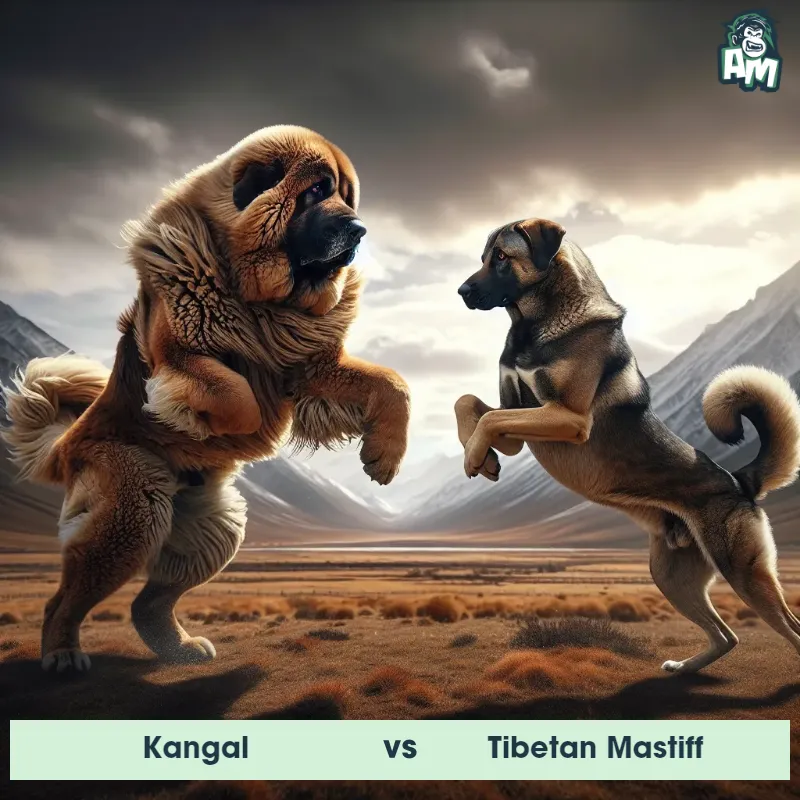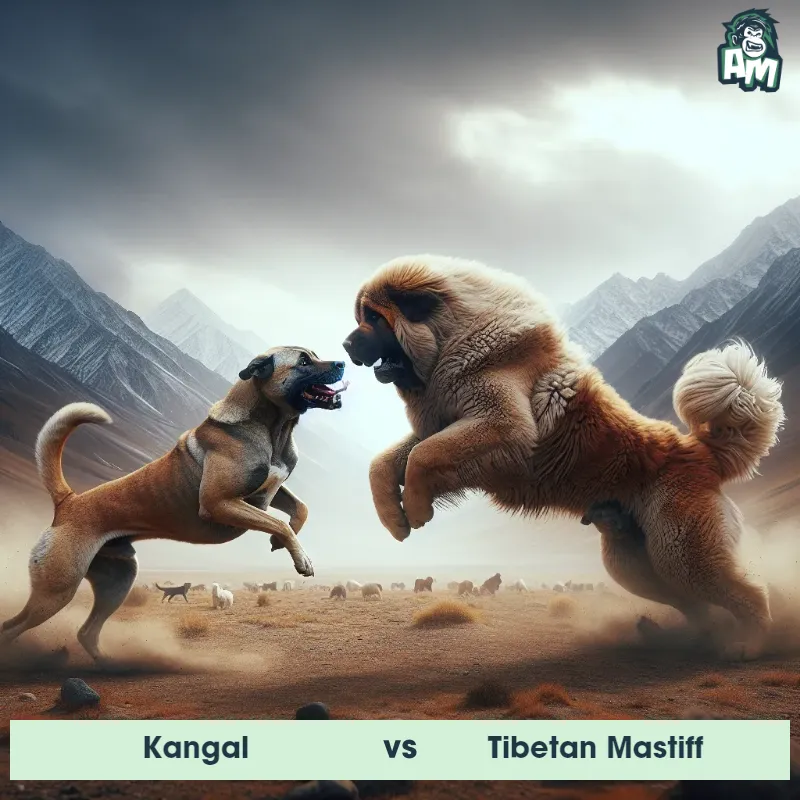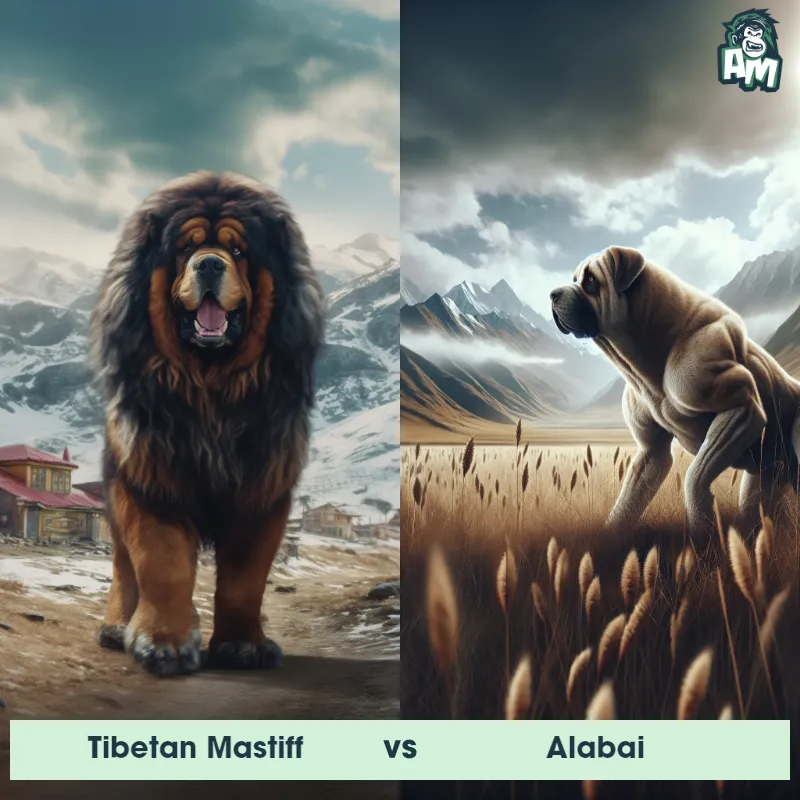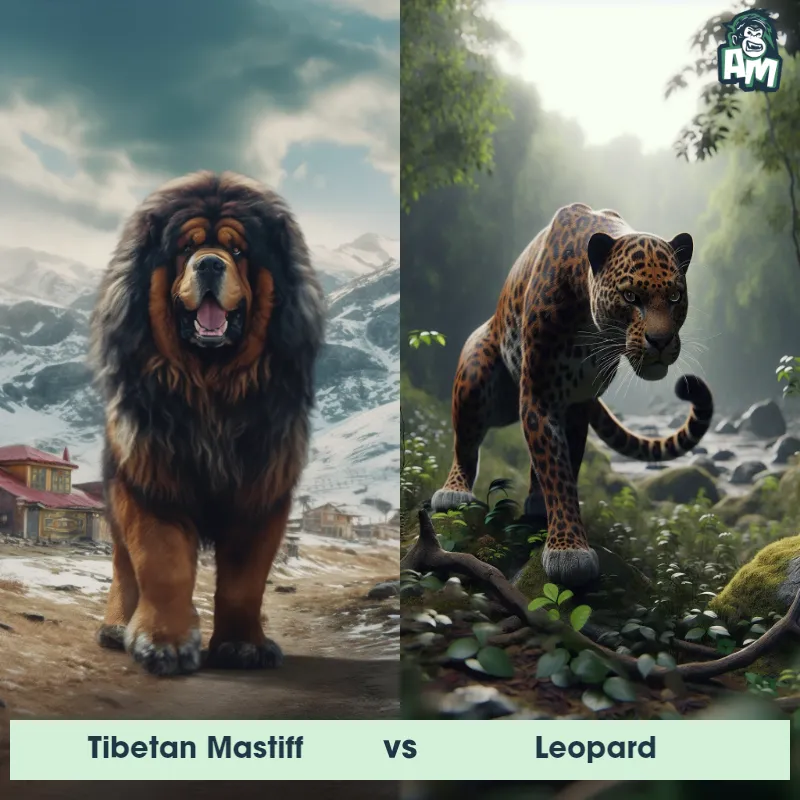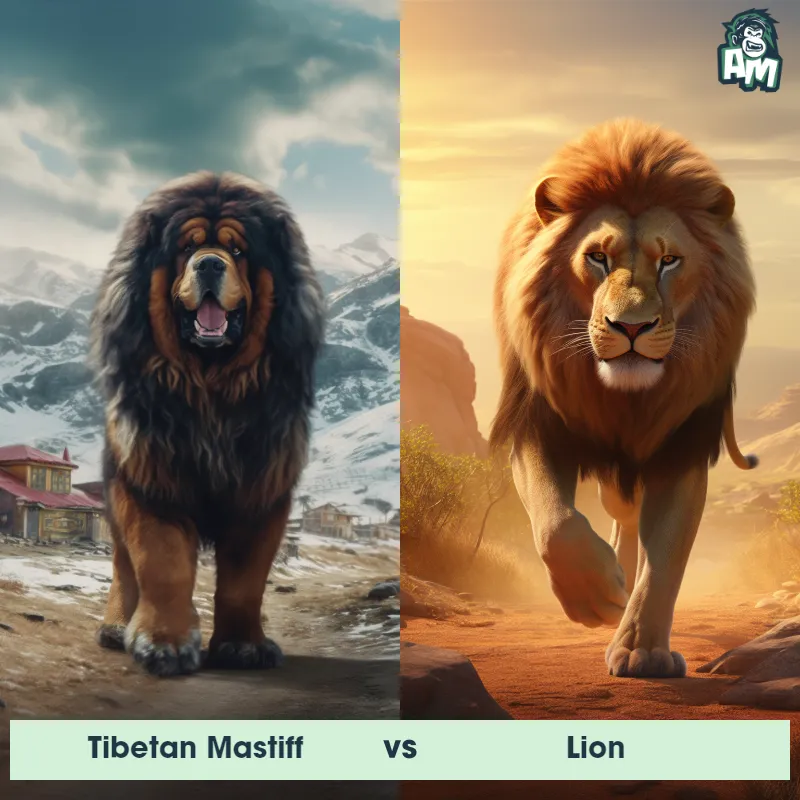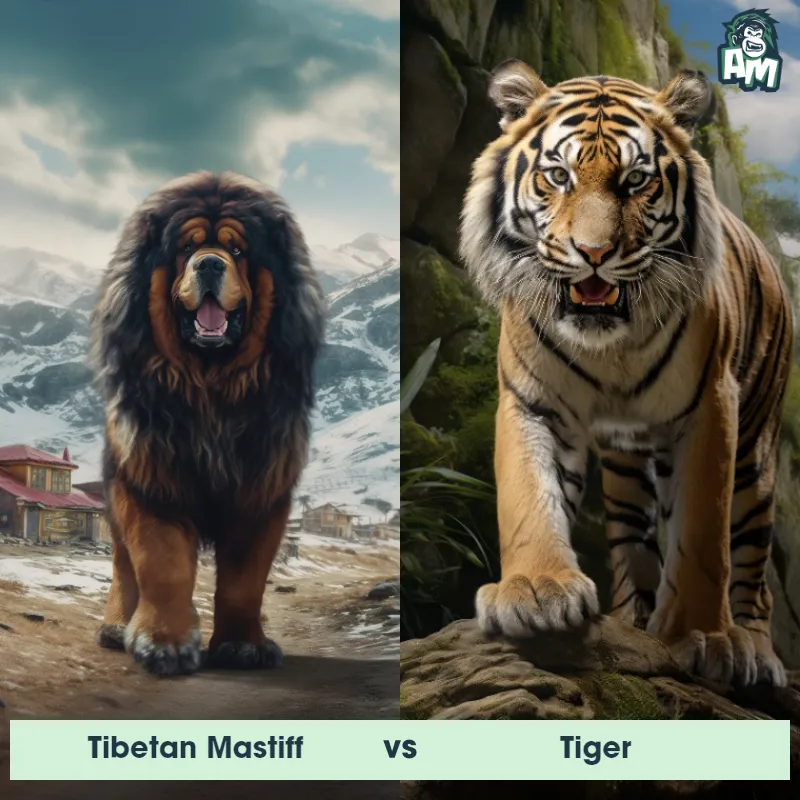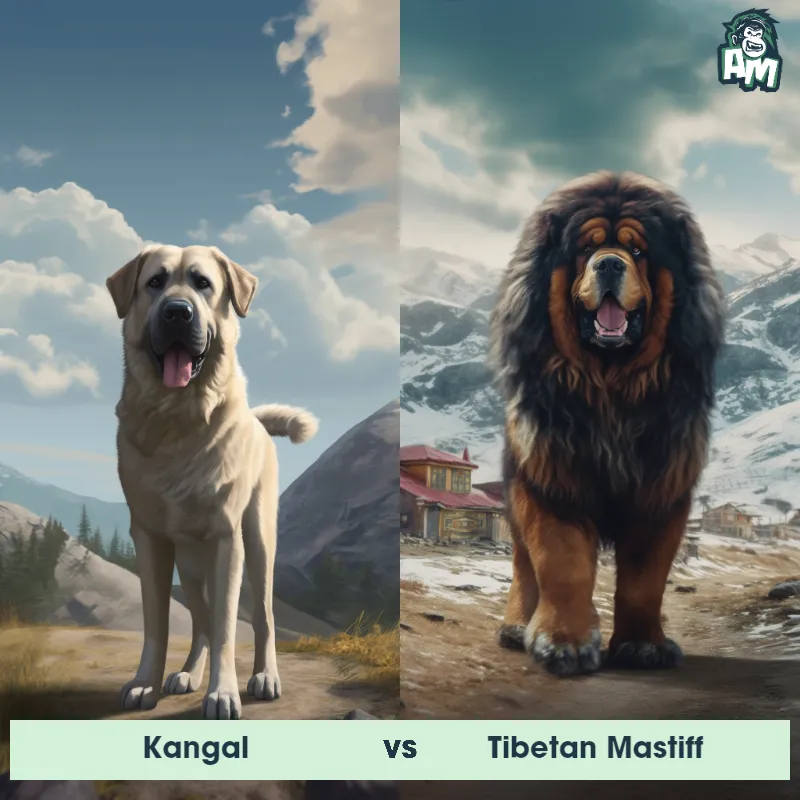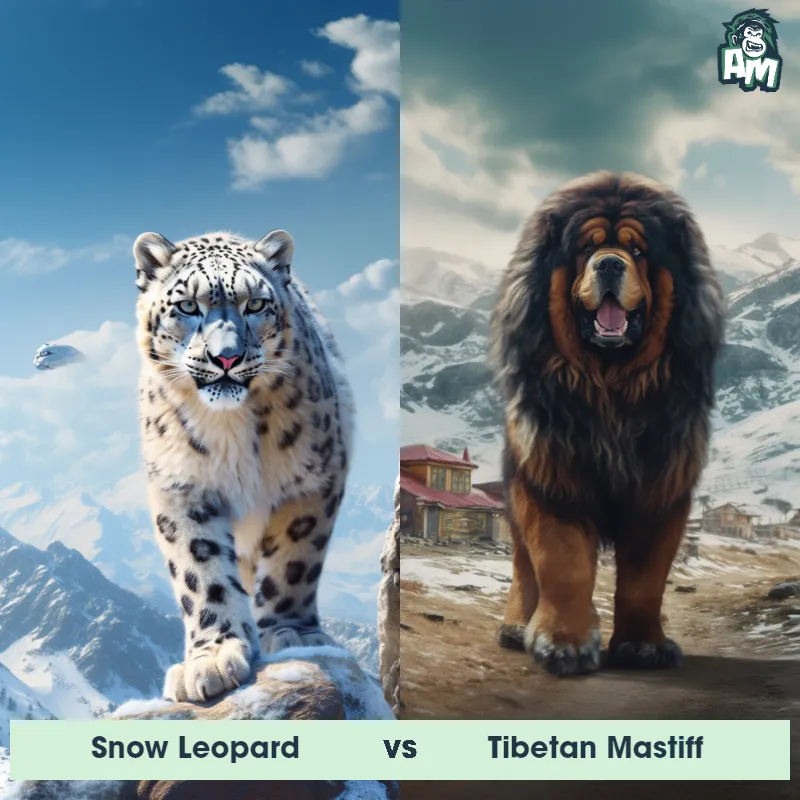The Tibetan Mastiff
The Tibetan Mastiff is a large and powerful dog breed that originated in Tibet. Known for its impressive size and majestic appearance, this breed stands tall with a strong build and a thick double coat. The Tibetan Mastiff has a broad head with a strong muzzle, deep-set dark eyes, and pendant-shaped ears. Its body is well-muscled and sturdy, giving it a regal and imposing presence. These dogs are known for their independent and protective nature, making them excellent guard dogs and loyal companions.
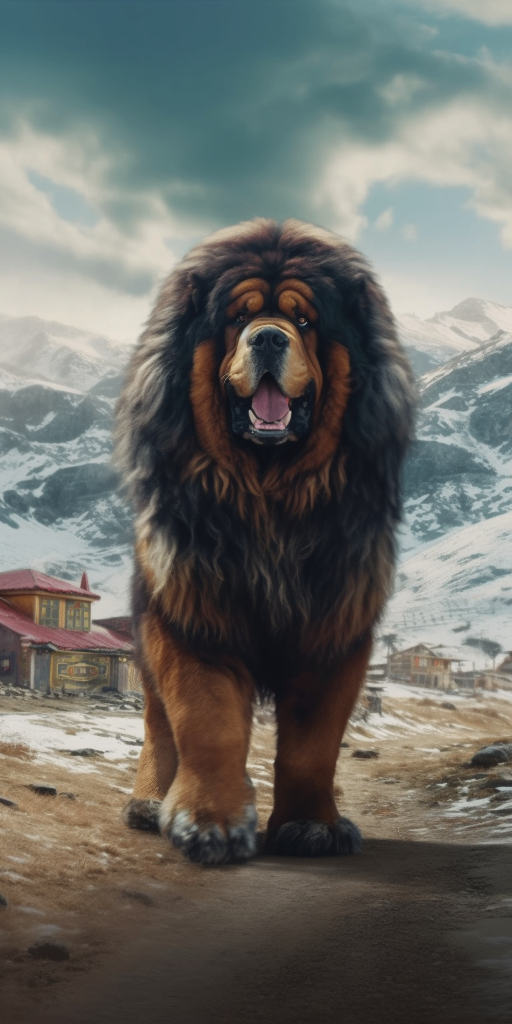
| Tibetan Mastiff | |
|---|---|
| Size | 26-30 inches (66-76 cm) at the shoulder |
| Weight | 100-160 pounds (45-73 kg) |
| Speed | Speed: 20 mph (32.19 km/hr) |
| Key Strength | Bite force and size |
| Biggest Weakness | Agility and speed |
| Scientific Name | Canis lupus familiaris |
| Family | Canidae |
| Habitat | Domesticated |
| Geography | Tibet |
| Diet | High-quality dog food, meat, and vegetables |
| Lifespan | 10 years - 14 years |

The Tibetan Mastiff
The Tibetan Mastiff is a large and powerful dog breed that originated in Tibet. Known for its impressive size and majestic appearance, this breed stands tall with a strong build and a thick double coat. The Tibetan Mastiff has a broad head with a strong muzzle, deep-set dark eyes, and pendant-shaped ears. Its body is well-muscled and sturdy, giving it a regal and imposing presence. These dogs are known for their independent and protective nature, making them excellent guard dogs and loyal companions.
Fun Fact: The Tibetan Mastiff is one of the most ancient and primitive dog breeds in the world, with a history that dates back thousands of years.
| Tibetan Mastiff | |
|---|---|
| Size | 26-30 inches (66-76 cm) at the shoulder |
| Weight | 100-160 pounds (45-73 kg) |
| Speed | Speed: 20 mph (32.19 km/hr) |
| Key Strength | Bite force and size |
| Biggest Weakness | Agility and speed |
| Scientific Name | Canis lupus familiaris |
| Family | Canidae |
| Habitat | Domesticated |
| Geography | Tibet |
| Diet | High-quality dog food, meat, and vegetables |
| Lifespan | 10 years - 14 years |
Match Highlights
Tibetan Mastiff Matchups
We use AI to simulate matchups between the Tibetan Mastiff and other animals. Our simulation considers size, strength, and natural predatory behaviors to determine the most likely outcome.
Tibetan Mastiff: Diet, Predators, Aggression, and Defensive Behaviors
What do Tibetan Mastiffs eat?
Tibetan Mastiffs are carnivores, so their diet should consist primarily of high-quality animal protein. This can include lean meats like beef, chicken, and turkey, as well as organ meats like liver and kidney. It's important to ensure they are getting the right balance of nutrients, so many owners choose to feed them a balanced commercial dog food specifically formulated for large breeds.
Do Tibetan Mastiffs have any predators?
In their native Tibetan region, Tibetan Mastiffs were bred to protect livestock from predators like wolves, snow leopards, and bears. As such, they are naturally protective and can be wary of unknown animals approaching their territory. However, in domestic settings, they typically do not have to worry about predators.
Are Tibetan Mastiffs aggressive?
Tibetan Mastiffs are known for their protective and independent nature, which can sometimes be mistaken for aggression. When properly trained and socialized from a young age, they can be loyal and affectionate companions. However, they may exhibit territorial aggression towards strangers or other animals if not properly trained.
Do Tibetan Mastiffs fight?
Tibetan Mastiffs have a strong instinct to protect their family and territory, which can sometimes lead to confrontations with other dogs. They are not typically prone to starting fights, but they will defend themselves if provoked. Proper socialization and training can help reduce the likelihood of aggressive behavior towards other dogs.
How do Tibetan Mastiffs defend themselves?
Tibetan Mastiffs are large, powerful dogs with a thick double coat that provides protection from the elements as well as potential attackers. They also have a deep bark and intimidating presence, which can be enough to deter potential threats. In a physical confrontation, they may use their strength and teeth to defend themselves.
What is the Tibetan Mastiff's biggest weakness in a fight?
Despite their size and strength, Tibetan Mastiffs are prone to overheating due to their thick double coat. In a fight or physical confrontation, they may struggle to regulate their body temperature, especially in hot weather. It's important for owners to be mindful of this weakness and provide plenty of water and shade to prevent heat exhaustion.
Fun Fact: Tibetan Mastiffs have a natural instinct for protecting their territory and loved ones, and their guarding abilities are so remarkable that they have been used to protect livestock from predators like wolves and snow leopards in their native Himalayan region.
Fun Fact: Tibetan Mastiffs possess a unique adaptation to their high-altitude habitat - their breathing system has evolved to handle the thin air, allowing them to thrive at altitudes over 15,000 feet.



